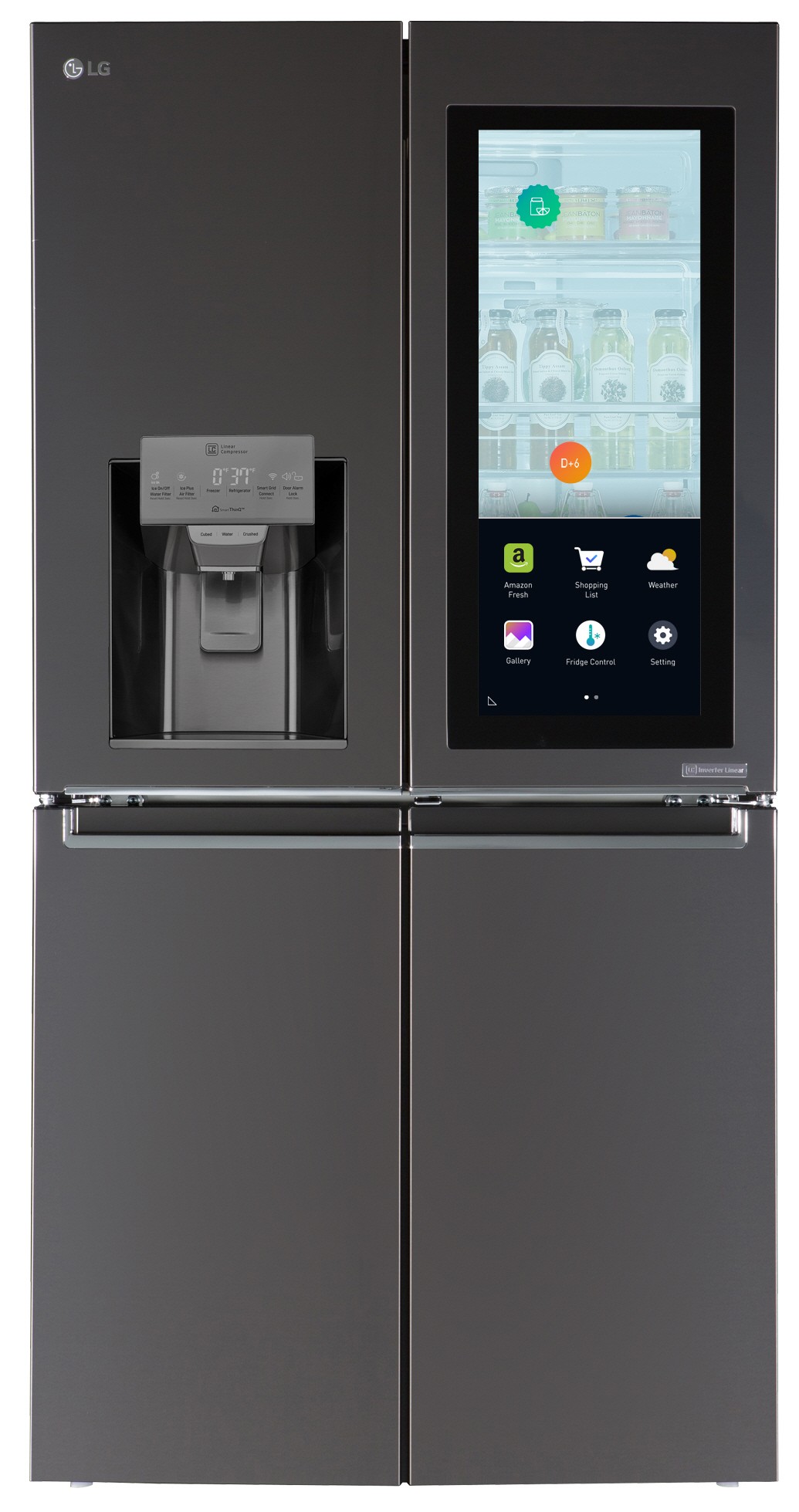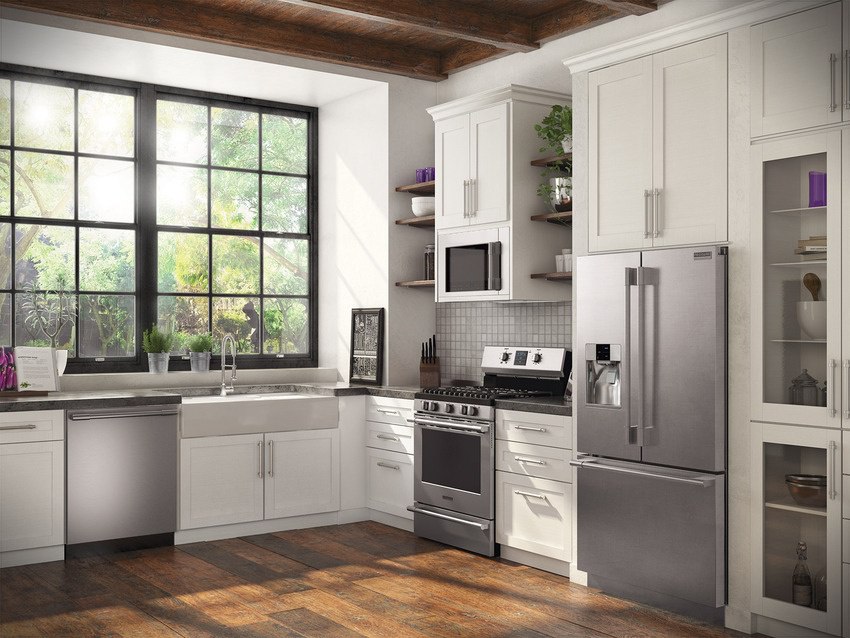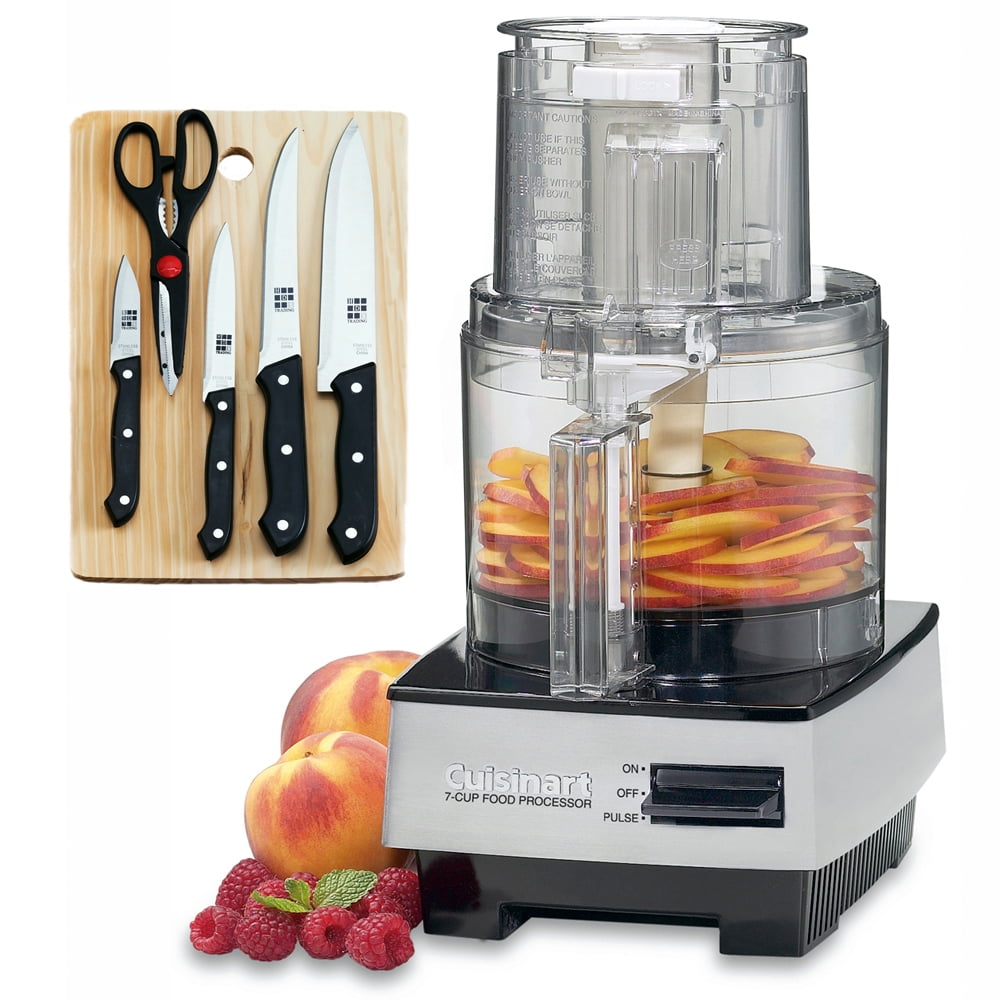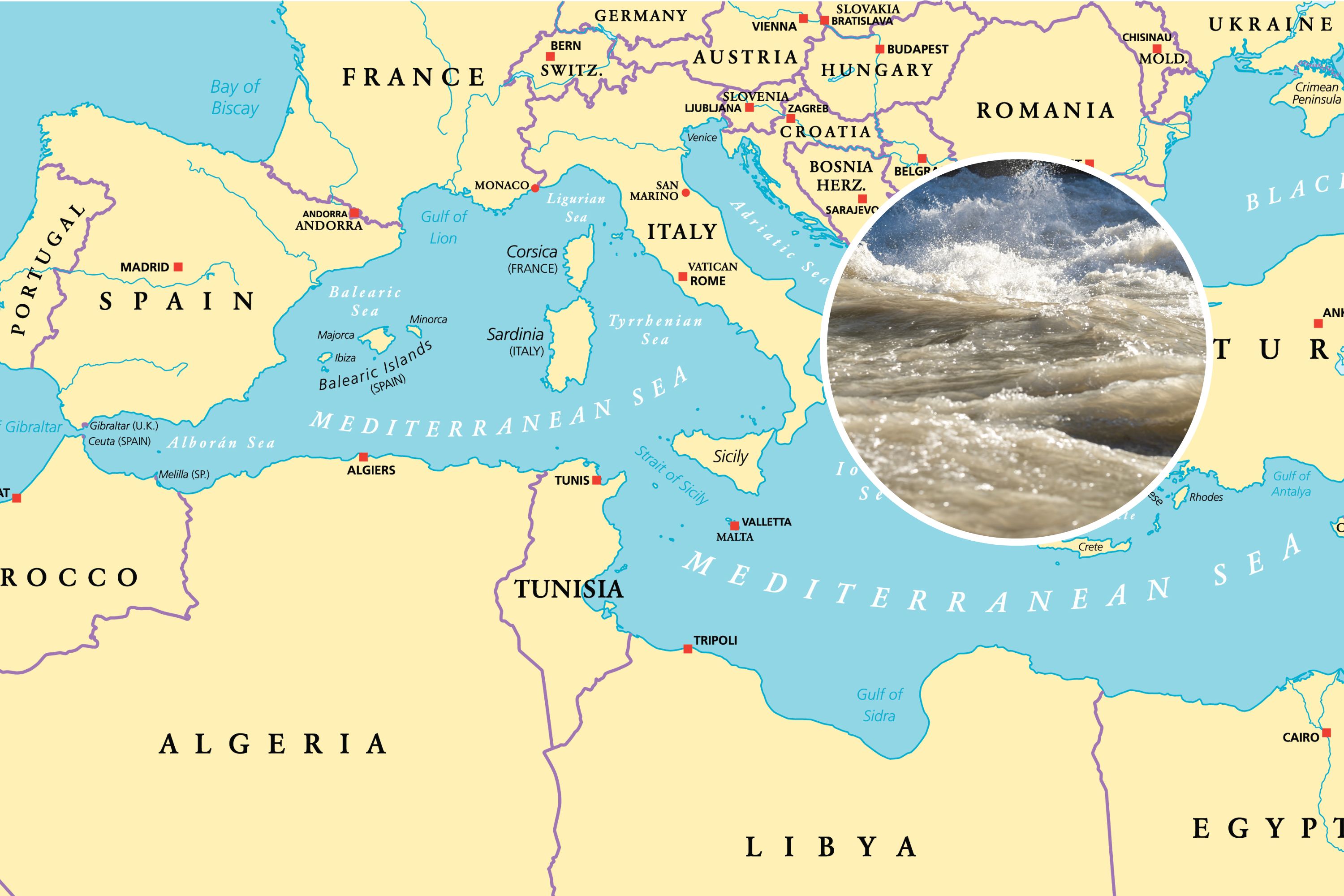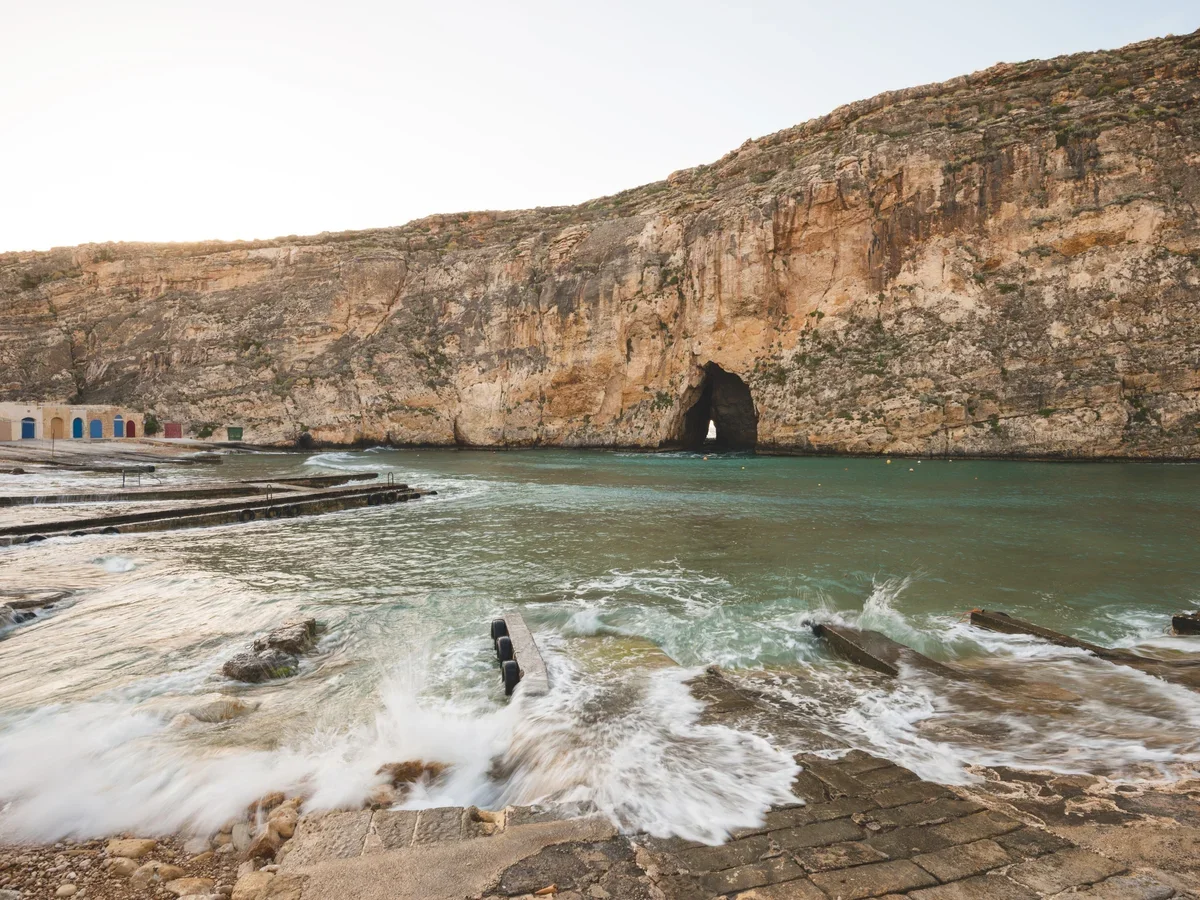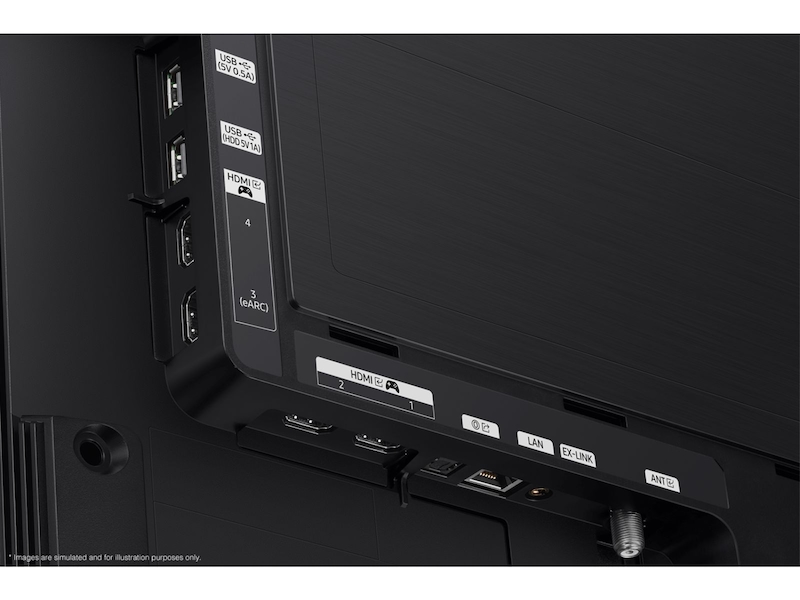Discover Pandipedia
Pandipedia is the world's first encyclopaedia of machine generated content approved by humans. You can contribute by simply searching and clicking/tapping on "Add To Pandipedia" in the answer you like. Learn More
Expand the world's knowledge as you search and help others. Go you!
Introduction
The atmospheric concentration of CO₂ was stable at approximately 270 parts per million (ppm) for at least 1000 years before the Industrial Revolution. However, since then, CO₂ levels have been rising rapidly. In 2009, the concentration had reached 384 ppm, a 40% increase from historical levels[1]. Projections suggest that this could exceed 550 ppm by the middle of the 21st century and 700 ppm by the century's end[1].
Understanding how plants respond to these changes is crucial. Free-Air CO₂ Enrichment (FACE) experiments are essential as they expose plants to elevated CO₂ concentrations in natural settings over extended periods. Here are six important lessons learned from nearly two decades of FACE studies[1].
Enhanced Photosynthesis in C₃ Plants
![None title: 'Fig. 1. Average plots of A/Ci response curves for Trifolium repens grown at ambient [CO2] (;365 lmol mol�1) and elevated [CO2] (;600 lmol mol�1) during spring (May 2001) and autumn (October 2000) at the Swiss FACE array in Eschikon, Switzerland (adapted from Ainsworth et al., 2003b and reproduced by kind permission of Oxford University Press). The maximum RuBP-saturated rates of carboxylation in vivo (Vc,max) were estimated from the initial slopes of each curve, and the maximum in vivo rates of electron transport contributing to RuBP regeneration (Jmax) were estimated using points after the inflection. The black dashed lines indicate the supply functions and resultant photosynthetic rates for plants measured in October, while the grey dashed lines indicate the supply function and resultant photosynthetic rates for plants measured in May.'](https://askpandipro.s3.amazonaws.com/users/1/documents/103/figures/0.jpeg?AWSAccessKeyId=AKIAQT4QH3CHNPX5WHX7&Signature=TrpblTyJC5MgQ%2FrvGN8VXWNUGLU%3D&Expires=1750456934)
One key finding is that elevated CO₂ stimulates photosynthetic carbon gain in C₃ plants despite a process known as acclimation. Acclimation is characterized by a decrease in the maximum carboxylation rate of Rubisco (Vc,max) and the electron transport rate for ribulose-1,5-bisphosphate (RubP) regeneration (Jmax)[1]. However, even with these reductions, the overall rate of photosynthetic carbon uptake (Asat) saw a marked increase. This is particularly true for species limited by Rubisco capacity, such as trees and grasses, which showed more significant photosynthesis increases compared to legumes and other functional groups[1].
Improved Nitrogen Use Efficiency
![Table 1. Estimates of the maximum theoretical saving in leaf N due to Rubisco acclimation at the elevated [CO2] used in FACE experiments Table 1. Estimates of the maximum theoretical saving in leaf N due to Rubisco acclimation at the elevated [CO2] used in FACE experiments](https://askpandipro.s3.amazonaws.com/users/1/documents/103/tables/0.png?AWSAccessKeyId=AKIAQT4QH3CHNPX5WHX7&Signature=G84ZPCVzq%2BiAQh6KSwH555cwEBU%3D&Expires=1750456934)
The second lesson from FACE studies is the improvement in Photosynthetic Nitrogen Use Efficiency (PNUE) in C₃ plants. Theory suggests that as photosynthesis increases, nitrogen use should become more efficient. Findings reveal that PNUE indeed increases by about 31%, driven by elevated photosynthesis rather than a significant reduction in leaf nitrogen content[1]. While the maximum potential nitrogen savings due to down-regulated Rubisco were initially overestimated, the actual figures are lower but still significant[1].
Reduced Water Use
Plants grown in elevated CO₂ have consistently shown reduced stomatal conductance (gs), which leads to lower water use[1]. Evidence from FACE experiments shows a consistent decrease in canopy evapotranspiration (ET) by 5% to 20%, depending on the species and environmental conditions[1]. For example, decreased gs in soybean leaves led to reduced whole-canopy water usage, ensuring higher soil moisture availability, particularly beneficial during drought periods[1].
Increased Dark Respiration in Soybeans
![None title: 'Fig. 3. Graphical representation of transcripts encoding enzymes of carbohydrate metabolism and respiration whose abundance is significantly altered by growth at elevated [CO2] during the day and night in the leaves of soybean grown at SoyFACE. Each blue or yellow box represents the statistically significant treatment response (P <0.05) of a unique transcript encoding an enzyme or protein structure. Insets show mean treatment values (6SE) of the (A) night-time rates of respiratory CO2 efflux and (B) respiratory O2 uptake of soybean leaves grown at ambient and elevated [CO2]. Means sharing a common letter are not statistically different. All data are average responses to elevated [CO2] (550 lmol mol�1) compared to ambient [CO2] (380 lmol mol�1), redrawn from data in Ainsworth et al. (2006) and Leakey et al. (2008).'](https://askpandipro.s3.amazonaws.com/users/1/documents/103/figures/1.jpeg?AWSAccessKeyId=AKIAQT4QH3CHNPX5WHX7&Signature=dvwVoJlrpSnH1Z0z6%2FZh99XwGrM%3D&Expires=1750456934)
Dark respiration, the process by which plants break down carbohydrates and produce CO₂ in the dark, was stimulated in soybean leaves grown at elevated CO₂[1]. This was attributed to greater gene expression relating to enzymes involved in carbohydrate metabolism and respiration. Along with increased photosynthesis, this stimulated dark respiration due to more abundant carbohydrate substrates[1]. While this result was particularly evident in soybeans, other species exhibited varied responses[1].
Limited Direct Effects on C₄ Photosynthesis
![None title: 'Fig. 4. Comparing the dependence of photosynthesis (A) on intercellular CO2 concentration (Ci) for C4 maize and C3 soybean. The maize data were fit using the equations for C4 photosynthesis (von Caemmerer, 2000). The soybean data fit according to the C3 leaf biochemical model of photosynthesis of Farquhar et al. (1980). The grey lines illustrate the supply function for CO2, starting at the atmospheric [CO2] and ending at the operating Ci of photosynthesis. This is illustrated for current atmospheric [CO2] (384 lmol mol�1, solid line), elevated [CO2] anticipated for 2050 (550 lmol mol�1, dashed line), and elevated [CO2] anticipated for 2080 (700 lmol mol�1, dashed and dotted line). This figure was redrawn using data from Leakey (2009).'](https://askpandipro.s3.amazonaws.com/users/1/documents/103/figures/2.jpeg?AWSAccessKeyId=AKIAQT4QH3CHNPX5WHX7&Signature=okkbwKe74wVHwXAElOIdgFs%2BPbI%3D&Expires=1750456934)
Contrary to C₃ plants, the direct stimulation of photosynthesis in C₄ plants by elevated CO₂ is negligible. This is because C₄ photosynthetic pathways are already saturated at current atmospheric CO₂ levels[1]. Nonetheless, under drought conditions, elevated CO₂ indirectly enhances photosynthesis in C₄ plants by conserving water and delaying drought stress. For instance, Sorghum and maize benefited from improved water status under dry conditions, leading to better photosynthetic performance and crop yields[1].
Smaller Than Expected Crop Yield Increases
FACE studies have shown that crop yield stimulations in response to elevated CO₂ are smaller than previously expected from theories or controlled environment experiments[1]. For major crops like soybean, the increase in light-saturated photosynthesis and daily carbon uptake at elevated CO₂ fell short of predictions made by chamber studies[1]. While theoretical projections suggested a significant boost in productivity with rising CO₂ levels, FACE results showed more modest increases. This discrepancy between theory and real-world data has profound implications for future food supply projections, highlighting the need for better understanding and optimization of crops under future atmospheric conditions[1].
Conclusion
FACE experiments provide invaluable insights into plant responses to elevated CO₂ levels, highlighting complexities that controlled environment studies cannot replicate. While enhanced photosynthesis and improved nitrogen and water use efficiency were key benefits, the expected yield gains in crop plants were lower than anticipated. These findings underscore the need for continuous research and innovation in agriculture to adapt to increasing CO₂ levels and ensure food security in the future[1].
Let's look at alternatives:
- Modify the query.
- Start a new thread.
- Remove sources (if manually added).
- Request a manual search from our human research team.

Hamilton Beach Electric Breakfast Sandwich Maker
This appliance allows users to cook an egg, toast an English muffin, and heat Canadian bacon or melt cheese all at once, making delicious breakfast sandwiches effortlessly[1].

Angry Mama Microwave Cleaner
A fun tool that cleans microwaves by releasing steam to loosen grime, making it easy to wipe clean[1].

BUTEFO 8-in-1 Kitchen Tool
A versatile gadget that combines a lemon squeezer, cheese grater, and measuring cup among other functions, offering eight tools in one[1].

MEATER Plus Smart Meat Thermometer
A wireless thermometer that tracks the internal temperature of food and connects to an app, estimating cooking time left[1].

Tupperware Chop ’N Prep Chef
A manual mini chopper that makes it easy to chop garlic and parsley without needing a knife or food processor[1].

Casabella Guac-Lock Container
This container locks out air to keep guacamole fresh and vibrant, preventing browning[1].

Evo Oil Sprayer
This sprayer allows for even oil application, ideal for healthier cooking results without unnecessary propellants[1].

OXO Baker’s Dusting Wand
A handy tool for evenly sprinkling confectioners sugar or cocoa, replacing traditional sifters with a more compact option[1].

Simple Spreading Butter Spreader Knife
Designed to easily shred cold butter for smoother spreading on toast[1].

Dreamfarm Non-Stick Pizza Scissors
These scissors cut through pizza easily, providing precise slices without the need for traditional pizza cutters[1].

Chef’n Nut Butter Stirrer
This gadget helps mix natural nut butters efficiently, addressing the issue of separation[1].

Whiskware Pancake Batter Mixer
A squeezable bottle that mixes pancake batter and dispenses it neatly, making breakfast quick and easy[1].

Stainless Steel Watermelon Slicer
A safe tool for kids to slice watermelon, providing uniform portions without mess[1].
Breville Joule Turbo
An immersion circulator that rapidly heats water, ideal for sous vide cooking, and features a user-friendly app[11].
:max_bytes(150000):strip_icc()/anova-precision-oven-0307f727601b4fa68872fc8b31649df5.jpg)
Anova Precision Oven
A smart oven that combines convection with steam cooking, capable of several cooking methods including sous vide[11].
Tovala Smart Oven
A versatile smart oven that can bake, broil, and steam, controlled via app or QR codes[11].
Breville Smart Oven Air Fryer Pro
A multi-function toaster oven that excels at air frying, toasting, and baking[9].

Instant Pot Pro Plus
A versatile cooker that offers pressure cooking, slow cooking, and smart connectivity for ease of use[11].
GE Profile Opal 2.0 Nugget Ice Maker
A countertop ice maker that produces nugget ice and connects to Wi-Fi for scheduling and alerts[7].
:max_bytes(150000):strip_icc():format(webp)/__opt__aboutcom__coeus__resources__content_migration__serious_eats__seriouseats.com__2018__07__20180624-kitchenaid-stand-mixer-vicky-wasik-8cdce31048104613aef272e52a4419c8.jpg)
KitchenAid Stand Mixer
A classic kitchen appliance known for its durability and performance, perfect for mixing a variety of ingredients[10].
LG Smart Refrigerator
A smart fridge with Wi-Fi connectivity, capable of monitoring its contents and integrating with smart home systems[12].
Samsung Smart Dishwasher
Features robust connectivity with the SmartThings app, making it easy to manage and monitor dishwashing[12].
Bosch Dishwasher
Renowned for quiet operation and efficient cleaning, often regarded as a top choice for luxury kitchens[12].
Frigidaire Affordably Luxurious Range
Offers an array of features at a budget-friendly price without sacrificing style[12].
Whirlpool Smart Oven
Known for being user-friendly and durable, this oven offers smart appliance features that enhance cooking[12].
Hamilton Beach Rice Cooker
A reliable and efficient option for perfectly cooked rice without needing constant supervision[5].
Instant Pot Duo
Versatile and popular for pressure cooking, slow cooking, and more, ideal for food prep[9].
Cuisinart Food Processor
A high-rated kitchen staple for chopping, slicing, and mixing, making meal preparation faster and easier[9].
Let's look at alternatives:
- Modify the query.
- Start a new thread.
- Remove sources (if manually added).
- Request a manual search from our human research team.
Get more accurate answers with Super Search, upload files, personalised discovery feed, save searches and contribute to the PandiPedia.
Overview of Biomes
Biomes are large ecological areas on the Earth's surface that are classified primarily by their climate, flora, and fauna. They play a crucial role in maintaining ecological balance and biodiversity. Here, we explore the various types of biomes, their characteristics, and the ecosystems they support.
Major Types of Biomes
Biomes can be broadly categorized into two main groups: terrestrial (land) biomes and aquatic (water) biomes. Within these categories are several distinct types, each with unique characteristics.
Terrestrial Biomes
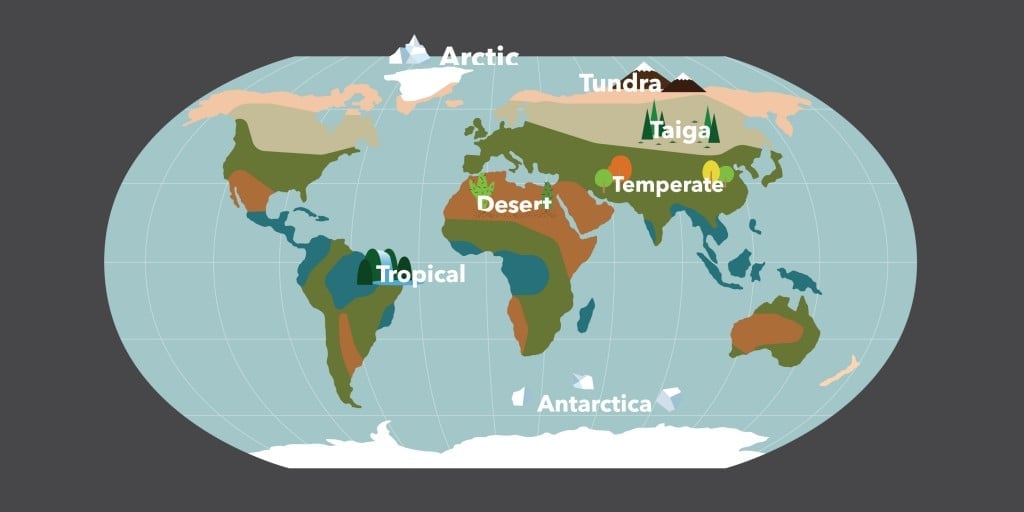
-
Tropical Rainforest: Located near the equator, tropical rainforests are characterized by their high biodiversity and humid conditions. These forests receive over 2000 mm of rain annually and maintain average temperatures between 20 to 25 degrees Celsius throughout the year. The lack of seasonal variation allows a diverse range of plant and animal species to thrive.
-
Temperate Forest: Found in regions like North America, Europe, and parts of Asia, temperate forests experience four distinct seasons, including cold winters. These forests are composed of both deciduous and evergreen trees and can have temperatures ranging from -30 to 30 degrees Celsius.

title: 'Road passing through a beautiful temperate forest at fall(Stephane Bidouze)S' and caption: 'a road with trees and leaves on the side' -
Grassland: Grasslands are large, open areas dominated by grasses with few trees. They are known for their rich soil, which supports a variety of wildlife and plants. Examples include temperate grasslands in North America and savannas in Africa that feature scattered trees and distinct wet and dry seasons.

title: 'White cloud formations in a bright blue sky over the beautiful African savannah(Cobus Olivier)s' and caption: 'a field with trees and blue sky' -
Desert: Deserts cover about 20% of the Earth’s surface and are categorized as either hot or cold, characterized by receiving less than 50 cm of precipitation per year. Desert life is adapted to extreme temperatures and limited water availability.
-
Tundra: This biome is known for its extreme cold and low biodiversity. Tundra regions are often treeless, have a layer of permanently frozen subsoil called permafrost, and receive very low precipitation ranging from 15 to 25 cm annually. It is typically divided into Arctic tundra and Alpine tundra, which are home to unique vegetation, including mosses and lichens.
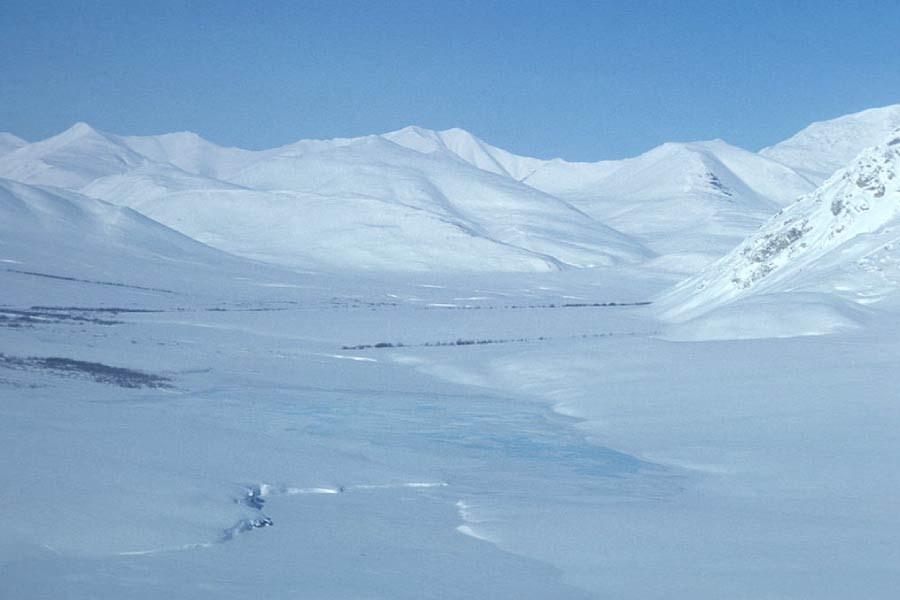
title: 'Tundra In Winter' and caption: 'a snowy mountain range with blue sky' -
Boreal Forest (Taiga): The taiga is the largest terrestrial biome and is primarily found in North America and Eurasia. Characterized by coniferous trees, this biome experiences long, cold winters and short growing seasons. It plays a critical role in carbon storage and contains a rich variety of wildlife adapted to cold climates.
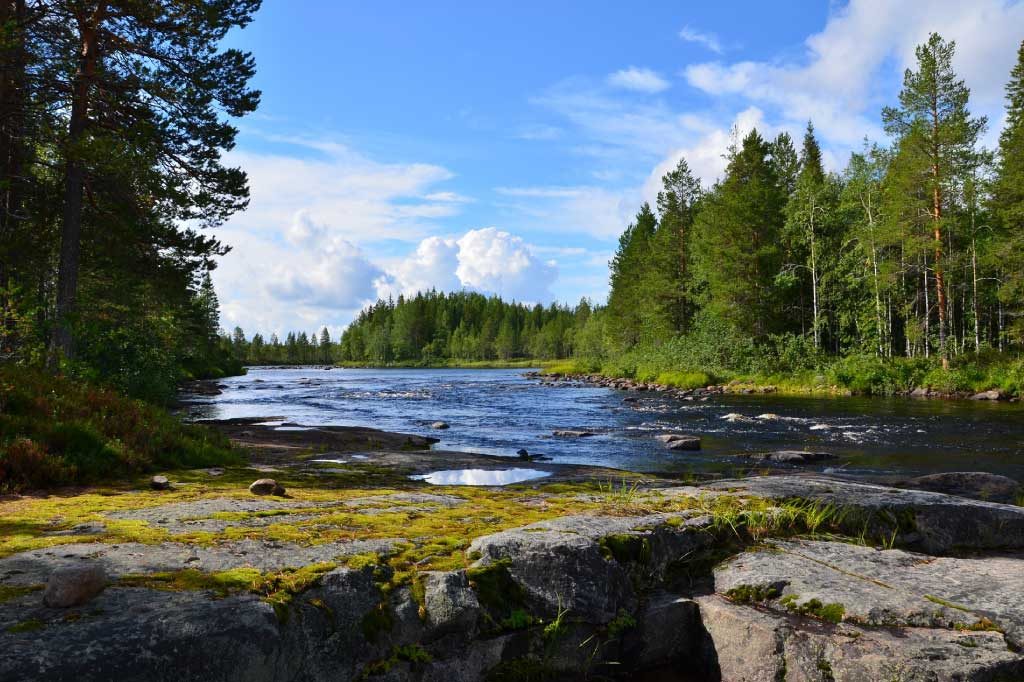
title: 'What is the taiga main image' and caption: 'a river with rocks and trees' -
Shrubland (Chaparral): Found in Mediterranean regions, shrublands are characterized by hot, dry summers and mild, wet winters. They support a range of flora, including drought-resistant shrubs and small trees, and are subject to seasonal wildfires.

title: 'A temperate forest in the Northern Hemisphere' and caption: 'a trail through a forest'
Aquatic Biomes
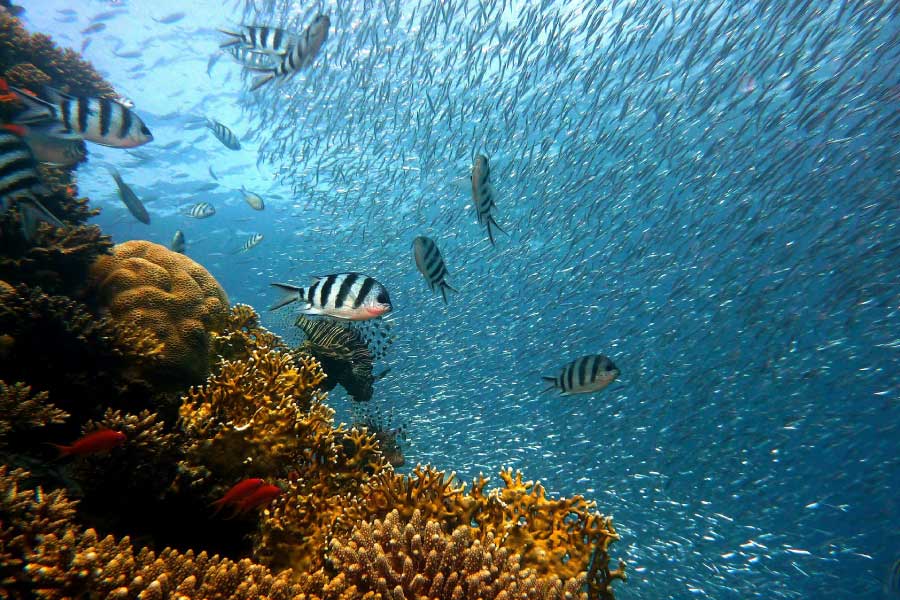
-
Freshwater Biome: Freshwater biomes include lakes, rivers, ponds, and wetlands. These ecosystems are characterized by low salt concentrations and provide habitats for diverse organisms. Freshwater environments play a vital role in the water cycle and support numerous communities of plants and animals.
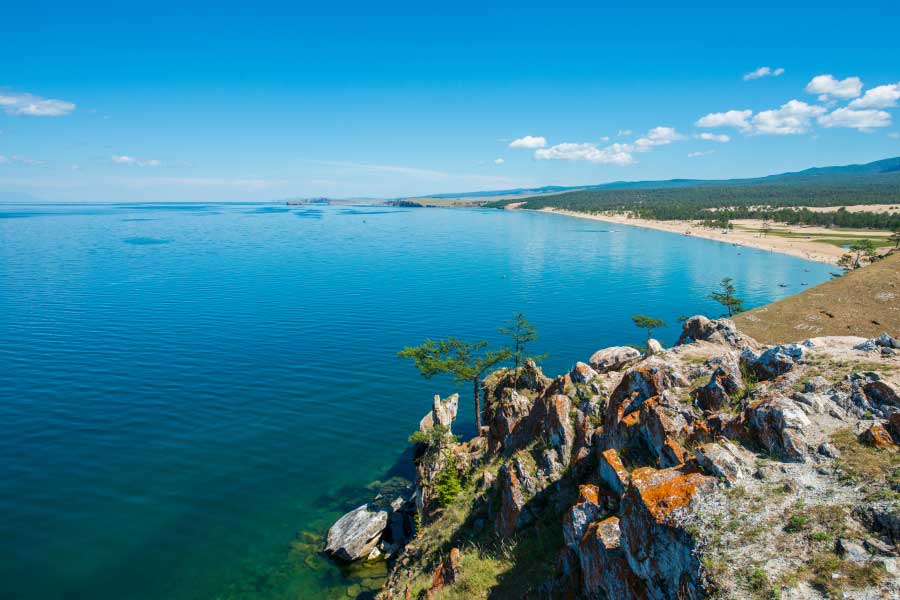
title: 'Lake Baikal' and caption: 'a rocky cliff above a body of water' -
Marine Biome: Covering approximately 75% of the Earth's surface, marine biomes include oceans, coral reefs, and estuaries. They are defined by high salinity and are crucial for global climate regulation due to their ability to store carbon dioxide. Coral reefs, found in shallow tropical waters, are among the most biodiverse ecosystems on the planet.

title: 'Underwater Nurse Shark in the Florida Keys(Andrew Jalbert)s' and caption: 'a shark swimming under water' -
Estuaries: Areas where freshwater from rivers meets and mixes with saltwater from the ocean are known as estuaries. These regions are especially rich in nutrients and support unique plant life that can tolerate varying salinity levels, making them critical for fish spawning and other marine life.
Biodiversity and Adaptation
Each of these biomes supports a distinct range of ecosystems, shaped by climate conditions, soil types, and geographic features. The organisms that inhabit these biomes have adapted to their environments over time, developing unique traits that allow them to survive and thrive under specific conditions. For instance, desert plants often have deep roots and waxy leaves to minimize water loss, while tundra species may have short growing seasons and specialized reproductive strategies.
Conclusion
Understanding the various types of biomes and their characteristics is essential for ecological study and conservation efforts. Each biome contributes to the Earth's biodiversity and plays a significant role in the global ecological balance. By studying the interactions within these biomes, scientists can better comprehend the complex relationships between climate, vegetation, and wildlife, ultimately aiding in the preservation of the planet's ecosystems.
Let's look at alternatives:
- Modify the query.
- Start a new thread.
- Remove sources (if manually added).
- Request a manual search from our human research team.

To start a vegetable garden, follow these steps:
Choose a Location: Select a spot that receives at least 6 to 8 hours of direct sunlight daily. Ensure the area drains well and avoid locations prone to high winds or poor foot traffic; a stable site is ideal[2][4]. If space is limited, consider using a small section of your existing flowerbed or lawn, or even containers on a patio[6].
Decide on Size: Start small to avoid overwhelm. A 10’ x 10’ garden (100 square feet) or a raised bed of 4’ x 4’ or 4’ x 8’ is recommended for beginners[2][4]. This allows enough room for 3 to 5 types of vegetables without excessive maintenance.
Prepare the Soil: Good soil is crucial. You can improve your soil by mixing in organic matter or compost[6]. For new gardens, consider using the 'no dig' method where you lay down cardboard to suppress weeds and cover it with compost[6]. If you need to excavate, ensure the soil is not compacted or too rocky[4].
Select Vegetables: Choose vegetables that you and your family enjoy eating. Start with easy and productive varieties; consider growing vegetables that are costly to buy or those that taste significantly better homegrown[1][2][3][6].
Planting: You can start plants from seeds or buy seedlings. Follow seed packet instructions for proper planting times and techniques[3][4]. Group taller plants such as tomatoes on the north side to avoid shading smaller plants, and consider using staggered plantings for continuous harvests[2][3].
Maintain Your Garden: Regular care is essential. Water your plants adequately, weed frequently, and check for pests. Use natural fertilizers if necessary to support plant growth[3][4][5].
Harvest: Learn when to pick your vegetables for peak taste and nutrition. Harvest regularly to encourage further growth[3].
By following these straightforward steps, you can successfully establish and maintain a vegetable garden that provides fresh produce for your household.
Let's look at alternatives:
- Modify the query.
- Start a new thread.
- Remove sources (if manually added).
- Request a manual search from our human research team.

Artificial Intelligence (AI) agents are revolutionizing our online experiences, making web browsing more intuitive and efficient [1].
Source text[1]
AI agents like Amazon's Nova are at the forefront of transforming web browsing, offering more personalized, efficient, and autonomous online experiences [1].
Source text[1]

The relentless hype around AI agents has given birth to some rather remarkable tools [9].
Source text[4]
In a world where 72% of knowledge workers report spending more than 3 hours daily on repetitive tasks, the rise of AI agents isn't just innovative—it's revolutionary [6].
Source text[2]
AI agents are redefining how we work by streamlining tasks and predicting our needs before we ask [7].
Source text[3]
Let's look at alternatives:
- Modify the query.
- Start a new thread.
- Remove sources (if manually added).
- Request a manual search from our human research team.
Overview and Geological Context

The Zanclean Megaflood refers to a proposed catastrophic flooding event that refilled the Mediterranean Sea at the end of the Messinian Salinity Crisis (MSC), which occurred between approximately 5.97 and 5.33 million years ago. During the MSC, the Mediterranean was largely isolated from the Atlantic Ocean, causing evaporation that transformed the sea into extensive salt flats. A number of studies now suggest that rather than a gradual reentry of water over thousands of years, there was an abrupt, high‐discharge flood that restored marine conditions rapidly. As stated in one source, “The Zanclean megaflood was an awe-inspiring natural phenomenon, with discharge rates and flow velocities dwarfing any other known floods in Earth’s history”[1][4][9]. This event is believed to have reconnected the Mediterranean with the Atlantic through a breach at the Strait of Gibraltar before spilling over into the eastern basin via a submerged land bridge called the Sicily Sill.
Evidence from Geological and Geophysical Observations
Multiple research teams have compiled extensive evidence for the highly catastrophic nature of the Zanclean Megaflood. Observations of more than 300 asymmetric, streamlined erosional ridges on and around the Sicily Sill indicate that powerful flows of turbulent water sculpted the landscape. As one study notes, the morphology of these ridges is “compatible with erosion by large-scale, turbulent water flow with a predominantly north-easterly direction”[6][14]. Geological sampling of these ridges revealed a layer of rocky debris on top that is interpreted as rapidly deposited material eroded from the ridge flanks and adjacent areas. This debris layer, which marks the boundary between the Messinian and Zanclean periods, is a key piece of evidence supporting the sudden onset of the megaflood[1][5][14].
Furthermore, seismic reflection data have uncovered a distinctive “W-shaped channel” on the continental shelf east of the Sicily Sill. This channel appears to connect the erosional features onshore to deep submarine canyons, particularly the Noto Canyon, thereby acting as a funnel for the massive floodwaters[6][11][27]. Such geophysical imaging has been crucial in confirming that these features are not the result of gradual processes but instead reflect the high-energy dynamics of a catastrophic flood event.
Flow Dynamics and Modeling Results
Hydrodynamic models have been used to simulate the behavior of the megaflood. These computer simulations helped estimate peak flow velocities, discharge rates, and the evolution of the flood as it transitioned from the western to the eastern Mediterranean basin. Model predictions suggest that discharge rates during the event ranged between 68 and 100 Sverdrups (with one Sverdrup equaling one million cubic meters per second)[2][8][14][27]. The floodwater is estimated to have reached speeds of up to 32 meters per second (72 miles per hour), and computer models indicate that as the water spilled over the Sicily Sill, its flow direction altered gradually in a clockwise manner, deepening channels further downstream[5][6][13].
These dynamic simulations are supported by geological evidence; for instance, the deposition of bedload debris and the formation of streamlined ridges are consistent with rapid, high-energy water flows that can modify both subaerial and submarine landscapes almost instantaneously on a geological timescale[1][13][19].
Implications for Mediterranean Evolution and Global Significance
The reintroduction of water during the Zanclean Megaflood not only refilled the Mediterranean basin dramatically but also had long-lasting effects on regional topography and sediment deposition. The flood is implicated in the formation of vast sedimentary deposits in the western Ionian Basin, with estimates suggesting that volumes up to 1,600 cubic kilometers of chaotic megaflood sediment were transported and deposited over a short time span[8][16][25].
Beyond reshaping the local landscape, the event had broader implications. Various studies have noted that such a massive and rapid influx of water would have induced seismicity, contributed to the erosion of canyons along the Malta Escarpment, and influenced the later development of Mediterranean ecosystems and human settlement patterns. As research has shown, “These findings not only shed light on a critical moment in Earth’s geological history but also demonstrate the persistence of landforms over five million years”[9][16][18].
Importantly, the evidence for this event challenges previous models that favored a slow, gradual reconnection of the Mediterranean with the Atlantic. New data suggest that the basin underwent a dramatic environmental transformation over a timescale of only a few years, rather than the previously assumed 10,000 years[4][20][24]. This recognition alters long-standing perspectives on the interplay between tectonics, climate, and oceanography in the Mediterranean region, and it provides a compelling example of how catastrophic events can dominate Earth's geological record.
Concluding Remarks
A synthesis of evidence from diverse sources, including geological field observations, seismic imagery, and numerical modeling, strongly supports the hypothesis of the Zanclean Megaflood as a rapid and massive event that refilled the Mediterranean Sea at the end of the Messinian Salinity Crisis. Multiple independent studies converge on key points: the identification of over 300 streamlined erosional ridges, the rapid deposition of debris marking the critical boundary between geological periods, the discovery of a W-shaped subaqueous channel acting as a funnel for catastrophic flows, and model estimates indicating unprecedented water discharge rates and velocities[1][2][3][4][6][8][11][14][16][19][24][27][29].
This comprehensive picture reinforces the idea that Earth’s history is punctuated by sudden, extreme events capable of reshaping entire regions. The Zanclean Megaflood serves as a dramatic example of such processes, reminding us that even vast ocean basins can be transformed in a matter of years due to the dynamic forces of water and tectonics. Continued research and exploration along the Mediterranean margins promise to further illuminate the details of this extraordinary event and its lasting legacy on our planet[7][10][12][15][17][20][21][22][23][25][26][28][30].
Let's look at alternatives:
- Modify the query.
- Start a new thread.
- Remove sources (if manually added).
- Request a manual search from our human research team.
Get more accurate answers with Super Search, upload files, personalised discovery feed, save searches and contribute to the PandiPedia.
Samsung QN90D
Known as the best TV for sports fans, it combines high peak brightness, excellent motion handling, and features like 4K at 144Hz support, making it ideal for gaming and viewing content in bright rooms[1][2][6].
Hisense U8N
This Mini-LED TV offers exceptional brightness, color vibrancy, and is praised for its user-friendly interface and smart capabilities, making it a top choice for everyday watching and gaming[2][3][6].
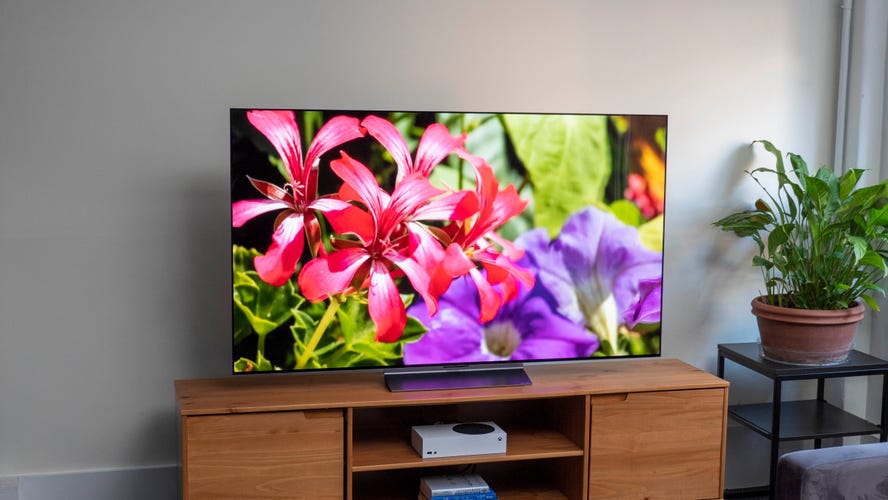
LG C4 OLED
An upper mid-range TV, this OLED model delivers stunning picture quality, especially in dark rooms, along with excellent gaming features and performance, including fast input lag and vibrant colors[9][11].
Sony A95L OLED
A top-tier choice for home theaters, providing superior picture quality and advanced HDR format support like Dolby Vision, as well as an excellent sound experience[4][9][10].
Samsung S90C
This QD-OLED TV not only excels in color accuracy and brightness but also features a gaming hub for gamers looking for low input lag and high refresh rate support[6][11].
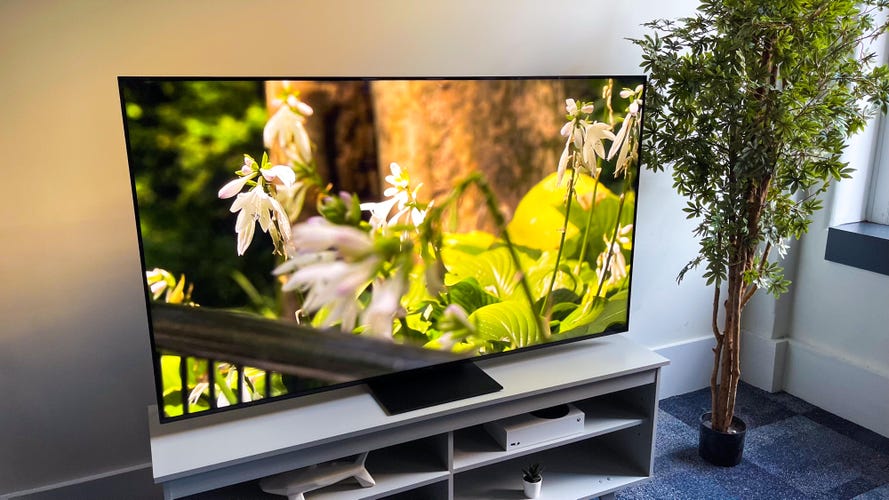
Panasonic Z95A
Offers breathtaking picture quality with impressive brightness and HDR capabilities, alongside support for multiple HDR formats and a robust audio system, making it a strong contender in the premium market[11][12].
LG G4 OLED
An ultra-thin OLED TV that leverages advanced brightness technology, it provides a captivating viewing experience with deep blacks and vibrant colors but may require an additional soundbar for optimal audio[9][10].

Amazon Fire TV Omni QLED
A budget-friendly option with good picture quality, vibrant colors, and integrated smart features, making it a practical choice for a wide range of viewers[2][3].
Sony BRAVIA 9 QLED
Provides stunning brightness and color accuracy with exceptional performance in bright rooms, though it has subpar viewing angles compared to others[4][11].
Sony A80L OLED
This model features excellent dynamic range and color accuracy, making it a standout for film enthusiasts, although its brightness may not compete with higher-end models[4][5].

TCL 4-Series
An affordable smart TV option with satisfactory performance in brightness and color, ideal for casual use and streaming without breaking the bank[9][12].
Hisense U6K
A budget TV that offers great value with effective local dimming, delivering decent performance and good HDR capabilities for its price[9][10].
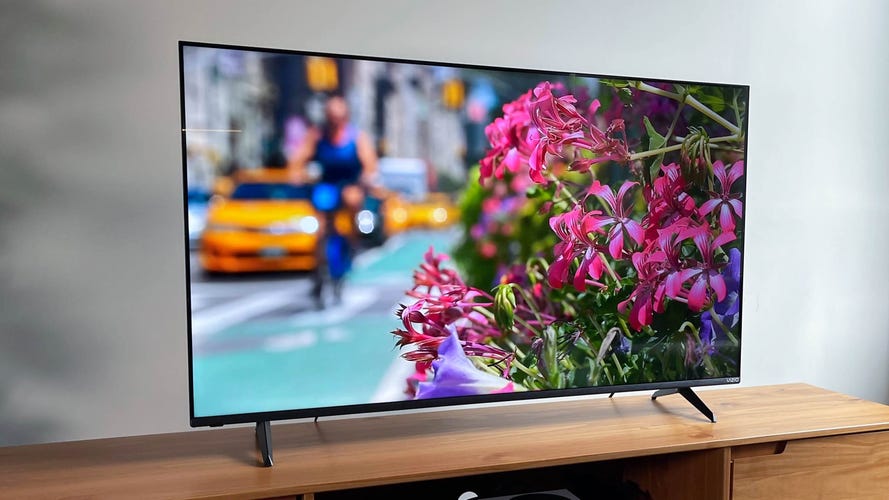
Vizio V-Series
A well-rounded budget TV option with balanced colors and decent sound quality, recommended for those seeking an entry-level model[9][12].
LG B4 OLED
An entry-level OLED that maintains deep blacks and offers a wide viewing angle, making it suitable for movie-watching and casual gaming[4][11].
Samsung QN900D
A premium 8K TV with superior upscaling and color accuracy, providing an impressive HDR experience, although the price point may be a consideration for many[11][12].
Philips OLED809
Notable for its Ambilight feature that enhances the viewing experience with immersive lighting, combined with strong audio performance and picture quality[9][10].
Amazon Fire TV 2-Series
This affordable option provides decent performance and accessibility to all major streaming services, ideal for those on a tighter budget[4][12].
LG G3 OLED
An exceptional choice for those wanting a big-screen OLED, with improved brightness, color accuracy, and gaming features, albeit at a premium price[10][11].
Sony XR A95K
Renowned for its colorful picture quality and great sound system that utilizes the whole screen for audio, providing a premium experience for viewers[6][9].
TCL 55C645
A budget-friendly TV known for its decent color accuracy and overall performance, making it suitable for those who prioritize value[12].
Let's look at alternatives:
- Modify the query.
- Start a new thread.
- Remove sources (if manually added).
- Request a manual search from our human research team.

Amazon Echo
The top smart speaker for interoperability and setup ease, functioning as a hub for compatible devices and offering excellent audio quality[1][2].

Arlo Pro 4 Smart Security Camera
Delivers 2K resolution video, works with major smart systems, and is easy to set up without requiring a hub[1][2].

Roku Streaming Stick 4K
A fast and reliable streaming device supporting all significant streaming services and compatible with major voice assistants[1][2].

Google Nest Learning Thermostat (3rd gen)
A stylish thermostat that learns routines and helps manage heating and energy usage effectively[1][4].

Google Nest Doorbell (Battery)
Compatible with both Alexa and Google Assistant, this rechargeable doorbell offers solid security features[1][2].

Google Wifi Pro
A mesh wifi system supporting wifi 6E for extensive and fast internet coverage, ideal for smart home integration[1][2].
Yale Intruder IA-320G Sync Smart Home Alarm
A well-regarded security system that is easy to set up with pre-paired components, though lacking external monitoring options[1].

Arlo Essential Indoor Security System
Works seamlessly with various smart home platforms, offering live video and notifications without a subscription[1][2].

Meross Mini Smart Plug (2-pack)
Affordable and compatible with multiple platforms, enabling remote control of devices via mobile app[1][4].

WiZ Colour Smart Bulb
A budget-friendly smart bulb with color and brightness adjustable via app, compatible with all major voice assistants[1][2].
August Smart Lock (4th Generation)
A plug-and-play lock that fits over an existing deadbolt, allowing easy app-based access control[2][4].

Ring Video Doorbell 4
This smart doorbell records in 1080p HD and features advanced motion detection and two-way audio[4].

Sonos Era 100
A smart speaker delivering high-quality audio capable of controlling smart devices with Amazon Alexa[4].
Nest Hub (2nd Gen)
A smart display that allows interaction with smart devices using touch and voice controls while offering enhanced sound quality[4].
Philips Hue Smart Bulbs
Flexible smart bulbs that are compatible with various smart home ecosystems and can be controlled via voice commands[4].

Ecobee Smart Thermostat Premium
A smart thermostat that learns heating preferences, works with multiple voice assistants, and includes a sensor for better HVAC management[4].
Blink Outdoor 4
A versatile security camera that offers indoor/outdoor functionality with comprehensive Alexa compatibility[2][4].
Roborock S8 Pro Ultra
Advanced robotic vacuum and mop combo featuring powerful suction and autonomous cleaning capabilities[3].
GE Profile Smart Mixer
A smart stand mixer equipped with voice control and smart scale features for precise baking[3].
Nanoleaf Sense+ Lighting System
An innovative lighting setup with smart controls that learns user habits and adjusts accordingly (available later in 2023)[3].

Lutron Caseta Smart Start Kit
A package of a smart switch and bridge for seamless integration with popular voice assistants and customizable lighting[4].
Let's look at alternatives:
- Modify the query.
- Start a new thread.
- Remove sources (if manually added).
- Request a manual search from our human research team.

Based on the IRS[1] guidance in Notice 2023-63, software development costs[1] can be capitalized and amortized under Section 174[1], rather than being expensed. For tax years beginning after 2021[2], amended Sec. 174 requires capitalization[2] and amortization of software development costs, with recovery through amortization over a specified period. The specific amortization period for software development costs under amended Sec. 174 is not provided in the given text. Additionally, the Tax Cuts and Jobs Act[1] now requires mandatory capitalization of software development costs. Certain costs related to the development of new software programs[4] and enhancements to existing software[4] are required to be capitalized under Section[1] 174, but costs incurred after the software is ready for sale or license to others[4], such as marketing, distribution, or customer support, are not required to be capitalized under Section 174.
Let's look at alternatives:
- Modify the query.
- Start a new thread.
- Remove sources (if manually added).
- Request a manual search from our human research team.

Fashion is often viewed as more than just a means of covering one's body; it acts as a profound form of self-expression that reflects individual identity, moods, values, and social contexts. This multifaceted relationship between fashion and self-expression highlights the psychological impact of clothing choices and their significance in conveying one's personality and aspirations.
Fashion as a Reflection of Identity

Clothing choices serve as powerful indicators of personal beliefs, cultural backgrounds, and individual tastes. Each outfit can communicate distinct messages about who we are, allowing individuals to present their unique identities to the world. The colors and styles chosen can express moods and character traits; for example, vibrant colors may portray boldness, while muted tones might signify a more reserved personality[3][5][10]. According to Rachel Zoe, fashion serves as a nonverbal means of communication, projecting one’s identity without needing words[10].
Moreover, our stylistic preferences often reflect our self-concept, which encompasses how we see ourselves and how we want others to perceive us. When individuals wear clothing that resonates with their self-image, it can enhance their overall self-esteem and confidence. This notion is supported by psychological theories such as 'enclothed cognition,' which suggests that the attire we choose can significantly affect our thoughts, behaviors, and emotional states[4][8]. For instance, individuals often feel empowered and confident when dressed in formal attire, as it can instill feelings of authority and competence[4].
The Psychological Impact of Clothing

Fashion choices directly influence how individuals feel about themselves. Various studies have shown that wearing clothing associated with power and competence can elevate self-perception and confidence levels. For example, participants in a study reported feeling more competent when donning formal attire, such as a suit or a tailored dress[4][8]. In contrast, wearing outfits that evoke discomfort or insecurity can lead to decreased self-esteem and an overall negative self-image[5].
Additionally, the context in which clothing is worn plays a crucial role. For example, the same outfit might convey a professional image in a workplace but can be viewed as casual in a social setting. Hence, individuals often manipulate their wardrobe choices based on the relevant contexts, reflecting adaptability in their self-expression[7]. By dressing appropriately for different occasions, people are able to project their desired identities and navigate social environments effectively.
Social Identity and Group Dynamics

Fashion also operates as a social signaling tool, allowing individuals to align with specific social groups or subcultures. The styles and brands that people choose can indicate their affiliations and aspirations. Wearing particular clothing can foster a sense of belonging, encapsulating how fashion connects individuals with the communities they identify with[5][9].
This social dynamic can sometimes result in individuals suppressing their own stylistic preferences in favor of conformity to group norms, especially in environments where specific dress codes are enforced, such as schools or workplaces. As highlighted in the literature, clothing can enforce a sense of conformity or belonging to a group, making it vital for individuals to navigate these expectations while attempting to maintain their personal identities[9].
Empathy and Individuality Through Fashion
Fashion has the potential to challenge societal norms and prejudices, creating opportunities for individuals to express diversity and assert individuality. For example, wearing garments that defy traditional gender norms can promote discussions around identity and inclusivity, allowing individuals to explore different facets of who they are in a socially affirming context[5][10].
Moreover, as young individuals experiment with their fashion choices, they can reflect their experiences and transformations. Fashion becomes a tool for self-exploration, contributing to the development of their identities as they navigate through various social landscapes. This exploration is not limited to visual aesthetics; it extends to embodying one’s values and beliefs, especially through sustainable and ethical fashion choices[9].
Conclusion: The Transformative Power of Fashion
In summary, fashion plays a crucial role in self-expression by serving as a canvas through which individuals can convey their identities, emotions, and values. The intricate connections between clothing choices, self-perception, and social identity illustrate how style can empower and enable personal narratives. As individuals continue to navigate the complex interplay of fashion, society, and identity, the choices they make in their attire can affirm who they are and how they wish to be perceived in the world around them. By understanding and embracing the role of fashion in self-expression, one can cultivate a deeper connection with their own identity and foster authentic interactions with others[1][6][10].
Let's look at alternatives:
- Modify the query.
- Start a new thread.
- Remove sources (if manually added).
- Request a manual search from our human research team.
:max_bytes(150000):strip_icc()/breville-joule-turbo-sous-vide-d5fb651b441e44b599fbd152314b73a5.jpg)
:max_bytes(150000):strip_icc():format(webp)/breville-joule-turbo-sous-vide-d5fb651b441e44b599fbd152314b73a5.jpg)







